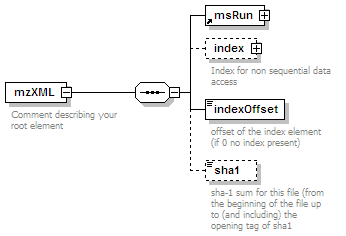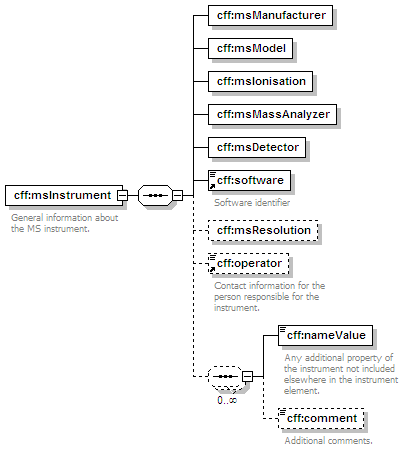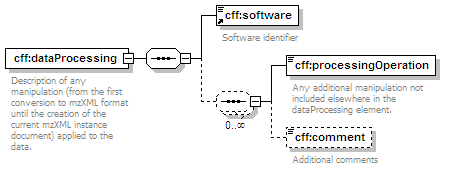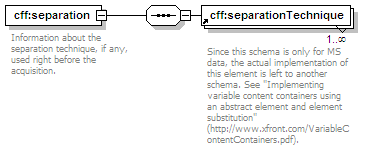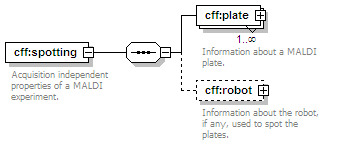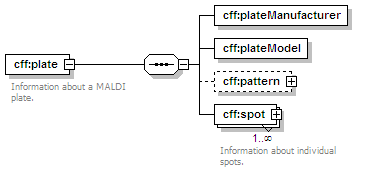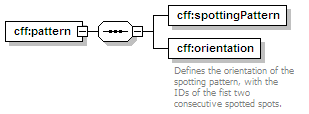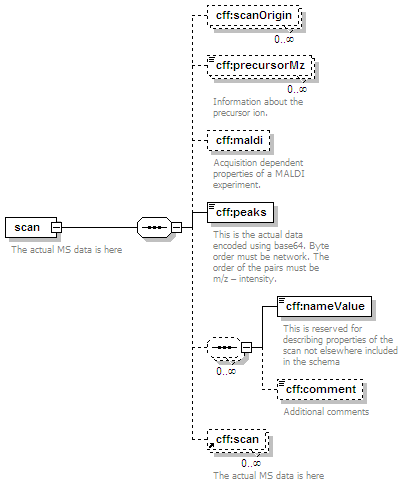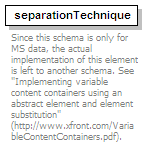| Name | Type | Use | Default | Fixed | Annotation |
| num | xs:positiveInteger | required | | | | documentation | Scan number |
|
| msLevel | xs:positiveInteger | required | | | | documentation | 1: MS
2: MS/MS
... |
|
| peaksCount | xs:nonNegativeInteger | required | | | | documentation | Total number of m/z-intensity pairs in the scan |
|
| polarity | | optional | | | | documentation | +: positive
-: negative
any |
|
| scanType | | optional | | | |
| centroided | xs:boolean | optional | | | | documentation | This only maters if centroided attribute of dataProcessing element is 0 or absent.
This attribute should be used only if some scans were processed and others not. If all scans were processed, than the corresponding attribute form the dataProcessing element should be used instead. |
|
| deisotoped | xs:boolean | optional | | | | documentation | This only maters if deisotoped attribute of dataProcessing element is 0 or absent.
This attribute should be used only if some scans were processed and others not. If all scans were processed, than the corresponding attribute form the dataProcessing element should be used instead. |
|
| chargeDeconvoluted | xs:boolean | optional | 0 | | | documentation | This only maters if chargeDeconvoluted attribute of dataProcessing element is 0 or absent.
This attribute should be used only if some scans were processed and others not. If all scans were processed, than the corresponding attribute form the dataProcessing element should be used instead. |
|
| retentionTime | xs:duration | optional | | | | documentation | Retention time of the scan |
|
| ionisationEnergy | xs:float | optional | | | |
| collisionEnergy | xs:float | optional | | | | documentation | Collision energy used to fragment the parent ion. |
|
| cidGasPressure | xs:float | optional | | | |
| startMz | xs:float | optional | | | | documentation | Setted low m/z boundary (this is the instrumetal setting) |
|
| endMz | xs:float | optional | | | | documentation | Setted high m/z boundary (this is the instrumetal setting) |
|
| lowMz | xs:float | optional | | | | documentation | Observed low m/z (this is what the actual data looks like) |
|
| highMz | xs:float | optional | | | | documentation | Observed high m/z (this is what the actual data looks like) |
|
| basePeakMz | xs:float | optional | | | | documentation | m/z of the base peak (most intense peak) |
|
| basePeakIntensity | xs:float | optional | | | | documentation | Intensity of the base peak (most intense peak) |
|
| totIonCurrent | xs:float | optional | | | | documentation | Total ion current (total intensity in the scan) |
|
